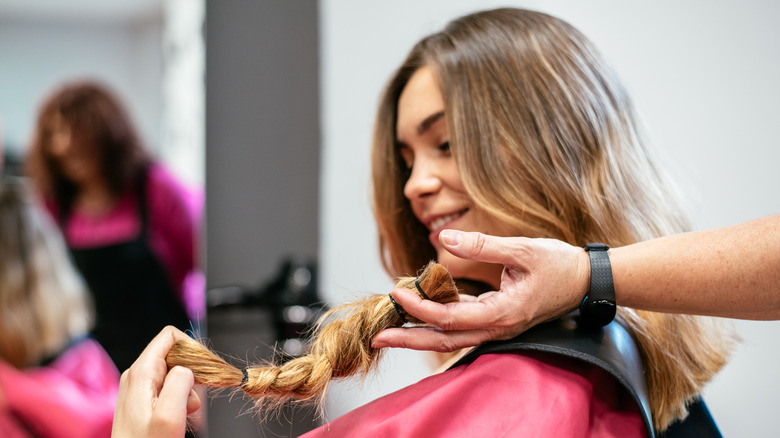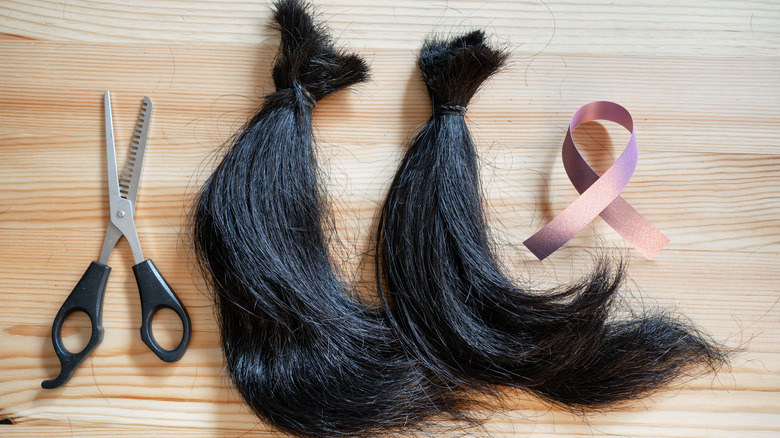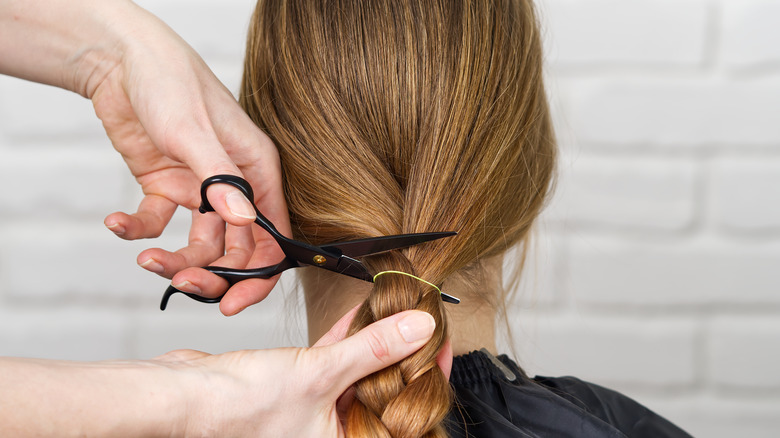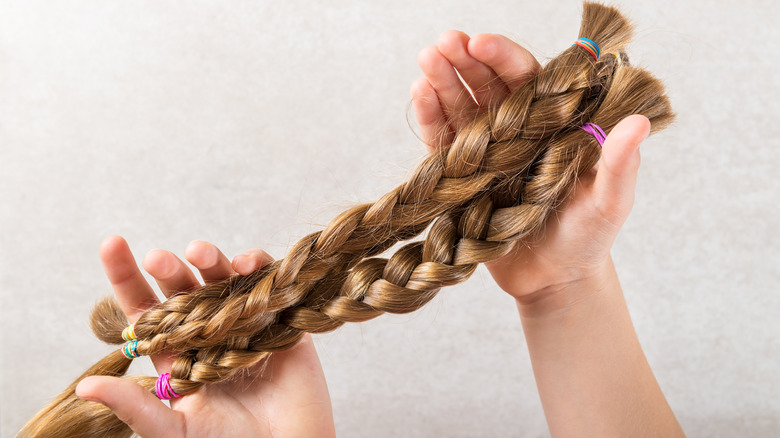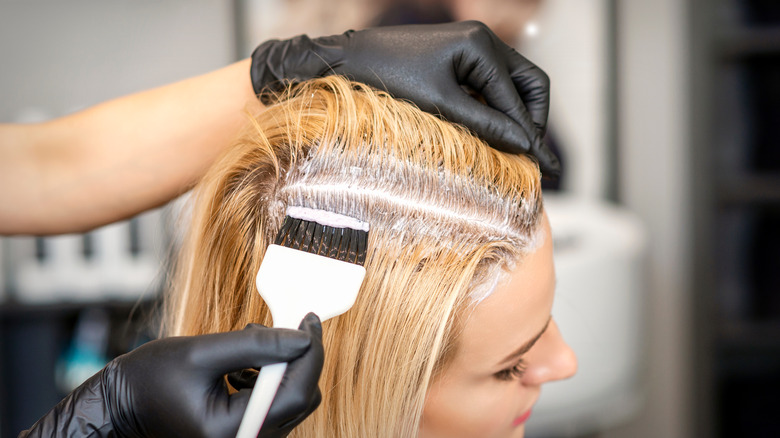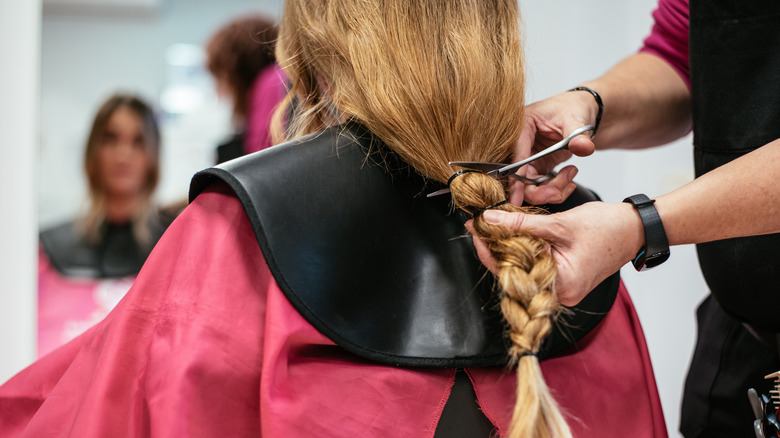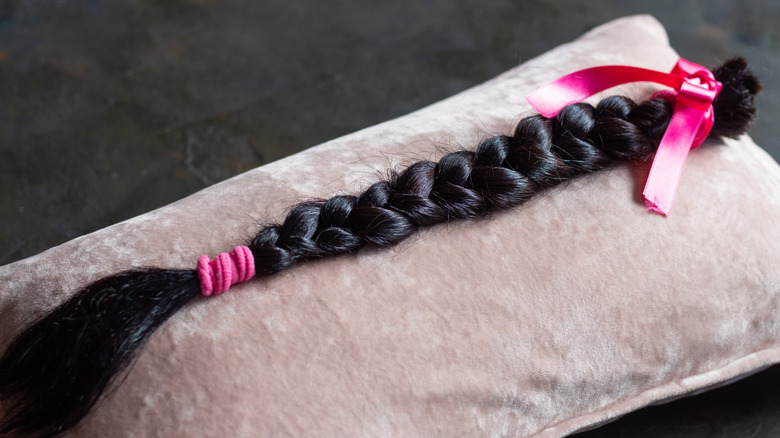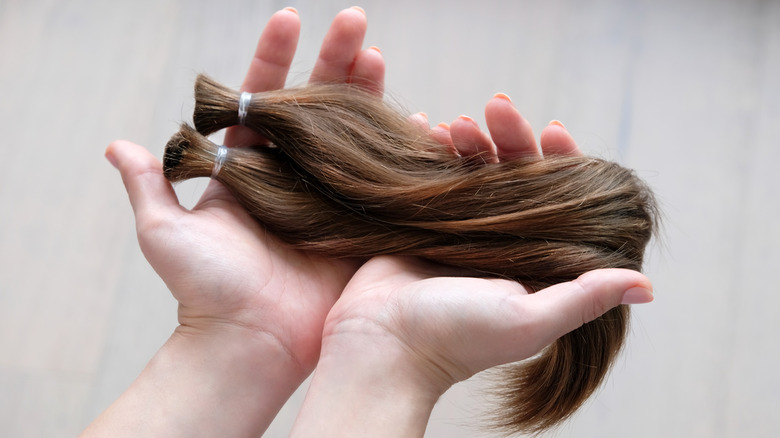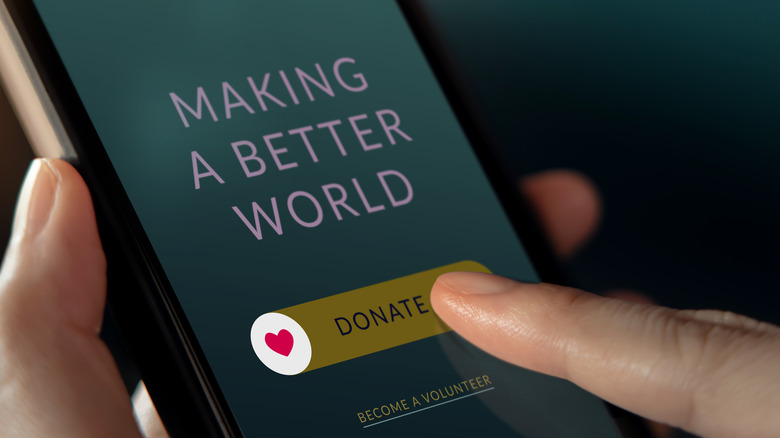Things You Should Know Before Donating Your Hair
Is your hair your pride and joy? Do you want to bring someone else happiness by donating it? Many women have made the decision to donate their hair to help those who are experiencing hair loss. It is a beautiful gesture and one that can really benefit someone who is going through a difficult time. But before you get out your scissors to make the big chop, there are some things you need to be aware of.
Not all hair is eligible for donation, and the process is not as simple as you think. It involves much more than cutting the hair; if you have had previous treatments, your hair may not be accepted. It is also not a decision that should be made without serious consideration and research into the charities that take hair donations. You want to find one where you meet the requirements and learn more about who benefits from your hair and what is done with it.
Are you still interested in making a change? Let's discuss how this decision can positively impact someone's life, as well as the drawbacks of chopping off your hair and why it may not be the right choice for you.
Who can donate their hair and why is it needed?
Anybody can donate their hair, but there are several restrictions on donating human hair, and each charity has specific requirements for what they will and won't accept. This includes hair length, texture, and hair that has undergone various heat, chemical, or color treatments.
The reason people are drawn to donating their hair is because of its ability to help others who are experiencing hair loss. This can be for various reasons, including cancer, alopecia, burns, and other medical hair loss conditions. The hair that is collected will be turned into wigs, and each charity usually focuses on a target group (i.e., cancer patients or those with other conditions, as well as children or adults) and has its own mission statement.
A wig can mean a lot more to someone than you realize. This includes helping them to feel better about themselves or deterring others from asking questions about their illness or condition.
How do you decide which charity is best for you?
Deciding to donate your hair is a way to help others, but it is not a decision that can be made on a whim and involves a lot of research into the donation process. There are multiple charities dedicated to hair donation, with some of the most prominent including Locks of Love, Children With Hair Loss, Hair We Share, Wigs for Kids, and Chai Lifeline.
Choosing the right charity for you will depend on several factors, including the requirements for each — some accept shorter hair lengths of around 8 inches, while others want a minimum of 14 inches.
You also want to learn who your donation will benefit and the charity's policies to ensure it's a good fit. It's also recommended to reach out to the charity of your choice to ask any questions you may have. For example, you may want specific details about what your donated hair will be used for or if there are any costs involved (for either you or the recipient).
Why does the hair need to be so long?
For many people, one of the biggest deterrents to donating hair is how long it needs to be. As mentioned, the hair length requirements differ depending on your chosen charity, but your hair must be long regardless of which one you settle on.
This is because wigs require a lot of hair. Each strand is also shortened significantly during this process of making the wig because it needs to be folded for sewing. This is why, for most charities, the minimum hair length they will accept is 8 inches.
But the longer, the better, and extra-long hair is in demand. "This has been a huge challenge because most of our wig recipients are asking for wigs that are 16+ inches, which means we are most in need of donations from 20 to 30 inches, [which are] very difficult to come by," Hair We Share co-founder Suzanne Chimera told Good Housekeeping.
The healthier your hair, the better
Charities want hair that is of excellent quality, so having your hair in great condition will ensure that it can be used. This means that color-treated and damaged hair is often not the best option, and many charities would prefer hair without prior exposure to chemicals. Split ends will also need to be cut off before the hair is donated.
If you know you want to donate your hair but feel it could be in a better condition first, use the time you have to maintain it. This may include deep conditioning treatments, avoiding the sun and chlorine, and not getting any procedures that could cause damage or dryness.
As for how you can get healthier hair? "Minimize the use of products and hair care practices that can damage the hair cuticle, especially those that use heat," board-certified dermatologist Ainah Tan told Byrdie. "These practices induce bubbles and breaks in the hair that can decrease luster and actually cause hair breakage."
Is there a special technique for how to cut hair?
You'll want to refrain from grabbing the nearest pair of scissors and chopping your locks with no rhyme or reason. Before cutting your hair for donation, it should be sectioned into several ponytails instead of placing it in a single braid or ponytail. This is to achieve the evenest length and will prevent any hair from being discarded. Dividing the hair into two to four ponytails will have much better results for the donation but also let you keep more length.
"If hair is pulled into one ponytail, the hair combed from each side is shorter in the ponytail, thereby making it too short to be used," Madonna Coffman, president of hair donation charity Locks of Love, told Good Housekeeping. "Generally, in a ponytail, only about 50% of the hair actually meets the 10-inch requirement, but when sectioned into smaller bundles, the hair is longer."
If you feel anxious about cutting your hair yourself, always seek the help of a professional who is familiar with the hair donation process to ensure it is done correctly.
The process of donating your hair involves several steps
If you think that the process of donating your hair is simple and only requires you to chop off your locks and send them, you would be misinformed. While it does not require much work, there are several steps you need to take before donating your hair.
Among the most important things to remember is that when the hair is donated, it needs to be free of products, clean, and dry. One of the biggest problems that charities face is discarding hair because it has mold on it when it arrives — this happens if you ship it wet. After your hair is cut, which can be done at a salon or at home (if you follow the appropriate steps, like securing it with a rubber band), it will need to be sealed.
It must be secured inside a plastic bag and placed inside a box or envelope for shipping. The hair can become damaged during transit if it is not packaged securely. Be sure to familiarize yourself with the requirements of your chosen charity, as the process may differ slightly.
Do you pay to ship your hair to charities?
Some charities may have a program in place to help alleviate the costs for the donor, and some may also pay you a small amount for your hair. If you are curious about what will happen to your hair and how it will be used, there could be a way to discover more.
"It costs us $145 [per wig] from received to recipient," Suzanne Chimera told Well + Good. "We offer hair donors our Ponytail Tracking Program to cover this expense, and while it has been catching on, less than 10% of the hair we receive gets sponsored by the donors."
Each charity will have its approach, but the appeal of Hair We Share's Ponytail Tracking Program is you get to see how your hair is used and what it will look like as a wig (this is a great comfort to some people who know their locks have been used for good and not discarded). You may even receive a photograph of the recipient of the wig.
Bleached hair cannot be donated
If you have spent years dyeing your hair with your favorite platinum blond and now want to donate your locks, wait just a minute ...
There are some types of hair that will not be accepted by charities, and hair that has undergone specific color or chemical treatments often cannot be used. This includes bleached hair because of the damage the process causes. However, some charities do not accept hair that has been highlighted or permed either.
"The reason is that bleached hair compromises the interior of the hair," Suzanne Chimera told Well + Good. "[When making wigs], the hair is sewn in a very tight knot (much like a crochet stitch). Bleached hair will break either during this process or worse, shed from the wig as it is worn." For obvious reasons, charities do not want to waste time and money creating wigs that will deteriorate quickly. They want to provide individuals in need with good-quality hairpieces that they can use for a long time and feel great about.
Can you donate gray hair?
You need to check that your hair meets the eligibility requirements before you can donate it. For many charities, there is a requirement to donate hair with only a small percentage of gray. Some do not accept any gray at all. This is why it is essential to do your research beforehand to find out if you are eligible to donate hair and, if so, which charity will benefit the most from your donation.
Some charities that accept gray hair won't use it to make wigs but will instead sell it to earn money. For example, most charities for children cannot use gray hair and will instead sell it to help with the costs involved in creating their wigs. If you are concerned about whether your chosen charity will accept your hair or what it will be used for, this is something to consider beforehand. You can also contact the charity for clarification on their processes.
Make sure your hairstylist is familiar with the donation process
Donating your hair is a fantastic thing to do and can make a difference, but it can also be emotional. Hair takes a long time to grow an inch — about two months, to be exact. So, it will be a while before you can get your previous length again. With this in mind, you want to choose a hairstylist that makes you feel comfortable.
That is not the only reason choosing the right person to cut your hair is important. You also need to find someone familiar with the donation process, as some charities want the hair to be prepared in a specific way.
"Go in and say, I want to donate my hair," Pantene stylist Danilo told StyleCaster. "Everybody in salons gets very excited by it. It doesn't cost anybody anything, and it's such a great gift to someone in need." There are several ways that the hairstylist may section and cut the hair, but the important factor is how long each piece is and if it adheres to the requirements of your chosen charity.
Is human hair donation still popular?
The improvement of synthetic hair has made it one of the top choices for wigs, making human hair donation less sought-after. There are also several pros to choosing synthetic hair over human hair, and it is cheaper to create wigs and often feels better to wear. In addition, there is no concern about hair damage, split ends, or the length being too short.
"Over the last several years, synthetic hair technology has vastly improved, giving synthetic hair wigs more of a 'real-hair feel,' making them lighter, cooler to wear, and easier to style," P&G spokeswoman Bilal Lakhani told Insider. "Due to these advancements, patients have told the ACS that synthetic wigs are now their preferred wig choice. This change in patient needs has resulted in decreased demand for real hair, and the time has come for us to wind down the Beautiful Lengths program."
This is just one charity (the Pantene Beautiful Lengths program worked with the American and Canadian Cancer Societies from 2006 until 2018), and others may not be experiencing the same decrease, so that does not mean your donation will not be appreciated or preferred.
Brace yourself for change and have a short hairstyle in mind
Cutting your long hair will be a dramatic change, so prepare yourself for this beforehand, including deciding on a cute new short hairstyle. You may want to visit your chosen hairstylist before chopping off your locks for donation to discuss which would be the best look for you, depending on your new hair length, texture, and face shape. This way, you can go into your appointment feeling confident that you will look just as great with short hair, which can help you mentally prepare for the change.
Also, consider whether this is the right time in your life to make such a big change. "Never get a serious haircut when you're facing a big life change or before a major public appearance," celebrity hairstylist Mark Townsend told Allure. "The initial plunge of losing substantial length can be scary for a lot of people," hairstylist Kristin Ess chimed in. However, that doesn't mean hair donation is not for you! It just stresses how important it is to feel ready and informed.
How does your donation make a difference?
Being able to do something selfless for someone else has obvious benefits and will make you feel great knowing you have helped in some small way. Hair donation is not a decision to be made overnight, though, because it requires a serious commitment to making the change. Still, if you are able to do this or help in some other way, the charities and the recipients will be incredibly grateful.
"Hair donations are a win/win for our organization and the donor," Madonna Coffman told Good Housekeeping. "Locks of Love is able to provide donated human hair to our manufacturer who produces the custom-made prosthesis for our recipients." It's a multi-level process that goes through many hands who are proud of the work they do.
Plus, donating hair is about so much more than providing individuals experiencing hair loss with a wig — it is also giving them confidence and helping to boost their self-esteem. Without people who kindly donate their hair, not as many would benefit.
How can you help if your hair is not long enough to donate?
If your heart is set on helping others, but you don't meet the requirements for hair donation (including hair length, color, or texture), there are still other ways that you can help. The truth about donating hair is that sometimes, you don't have to make the chop to make a difference. Many charities need financial support, and your financial contribution could go a long way to helping others. Despite receiving human hair for free, making wigs or other hairpieces is still a hefty cost.
"There are two other very important parts of what it takes to continue to provide free hairpieces, products, and styling tools to the hundreds and hundreds of children all over the country in need of hair from all the causes of hair loss like alopecia, cancer, trichotillomania, burns, and other medical causes," hair and scalp specialist and founder of Wigs for Kids Jeffrey Paul told Byrdie. "The two other needs are the financial needs to subsidize the costs of manufacturing and managing the programs for the children and their families." If you have a specific skill set involving hair, you may also be able to partner directly with a charity to make a difference in the lives of those who need it.
